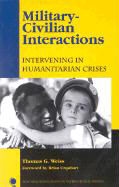Ulteriori informazioni
Is it possible and worthwhile to use the military in conjunction with humanitarian action to thwart violence and mitigate civilian suffering? This timely book seeks to answer this question by looking at the contemporary context and history of military-civilian interactions, developing a framework for assessing military costs and civilian benefits, and examining in depth the five most prominent cases-Northern Iraq, Somalia, Bosnia, Rwanda, and Haiti. Visit our website for sample chapters!
Sommario
Chapter 1 Introduction Chapter 2 Armed Forces and Humanitarian Action: Present and Past Chapter 3 Framework for Estimating Military Costs and Civilian Benefits from Intervention Chapter 4 Northern Iraq, 1991-1996: A Difficult Act to Follow? Chapter 5 Somalia, 1991-1995: The Death of Pollyannaish Humanitarianism? Chapter 6 Bosnia, 1992-1995: Convoluted Charity? Chapter 7 Rwanda, 1994-1995: Better Late than Never? Chapter 8 Haiti, 1991-1996: Why Wait So Long? Chapter 9 Humanitarian Intervention: Costs, Benefits, Quandaries Chapter 10 Notes Chapter 11 Selected Bibliography on the 1990s Chapter 12 Index
Riassunto
A book which looks at the coming together of military forces and civilian agencies in dealing with the human suffering resulting from complex emergencies. It examines the cases of Bosnia, Somalia, Rwanda, Haiti and Northern Iraq and develops a framework for measuring the military costs and civilian benefits involved in humanitarian actions.

